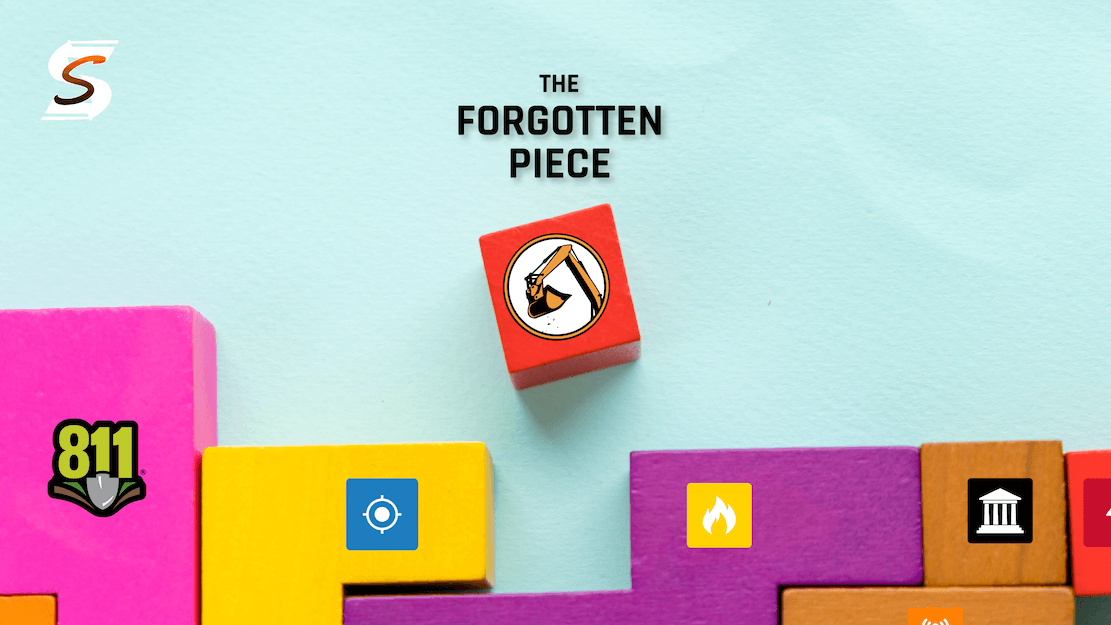
I’m taking part in The Roundtable for Contractors today with Planet Underground and so I thought I’d spend some time highlighting what this roundtable is seeking to address. When it comes to damage prevention in the underground utility world, the focus is often on the one-call notification systems, locators marking lines, and utility owners protecting their assets. However, there is one critical group that is frequently an afterthought - the contractors and excavators who ultimately do the digging. These are the boots on the ground handling the shovels, backhoes and equipment that can potentially strike buried lines every single day on jobsites across the country.
Despite their pivotal role, contractors are largely underrepresented at industry events, conferences and meetings about dig laws, best practices and damage prevention. Thankfully they’ve been increasing their input to the DIRT Report but their voices are rarely loudly heard on these issues that directly impact the daily safety of their work. It's time that changes by proactively engaging and empowering this unsung hero of the damage prevention world.
"Contractors have a lot to say about today's 811 system and processes, but they are almost always outnumbered and overshadowed at industry events," said Connor Gavin of Planet Underground. "We need to shine the spotlight on the excavators because at the end of the day, they are the ones who have to apply all the rules, policies and procedures when they break ground on a job."
Improving Communication and Creating Mutual Respect
There is clearly a disconnect between the damage prevention policies developed at conferences and roundtable discussions, and the real-world application of those policies by contractors out in the field. Part of bridging that gap is improving two-way communication and developing mutual respect between the rule makers and rule followers. Too often, contractors feel like an afterthought when it comes to damage prevention regulations and oversight. They are made to follow a set of policies that those actually doing the digging had little or no say in creating. We need to loop them in from the very start; which means they should have access to the same data and mapping - ideally through a portal in your locate ticket management system. Contractors and utility owners may have an adversarial relationship at times, with each group distrusting the other's motives and priorities. However, there needs to be a realization that they actually have the same goal - to keep underground lines and workers safe while getting projects completed on time. Building that mutual understanding and respect is key.
Empowering Contractors Through Education
When contractors feel engaged, empowered and respected within the damage prevention industry, it creates a positive cycle of responsibility, accountability and buy-in from those stakeholders. This can be furthered by improving educational resources and skills training made available to excavators. Skilled excavators who have a thorough understanding of dig laws, buried utility marking types, safe digging techniques, and proper procedures to follow when putting steel in the ground are a utility owner's best line of defense. By investing in contractor education and skills development, the entire industry benefits through increased enforcement of damage prevention processes.
DPI
I would also recommend that contractors utilize the Damage Prevention Institute (DPI) system, as it comprehensively engages and empowers them as essential partners through shared accountability, adherence to best practices, performance metrics, peer review, and accreditation potential. The DPI embeds contractors in the process with an equal stake, mandating they follow CGA's proven safe excavation guidelines which are measured and benchmarked against others. Contractors gain immense value from the peer review model, facilitating open knowledge sharing of lessons learned and collaborating on solutions to persistent jobsite challenges. Top performers can ultimately earn DPI accreditation, validating their elite damage prevention commitment. In short, the DPI system benefits contractors by weaving them into the fabric of a collaborative process improving safety, adherence to best practices, accountability through metrics, and knowledge sharing - reducing damages and risk while showcasing their industry-wide dedication.
Conclusion
The damage prevention industry has historically had a blind spot when it comes to the contractor community who handles the shovels and heavy equipment. While one-call systems and comprehensive facility records are critical, it's the human element of excavators who are responsible for executing on those protocols every single day. It's time to bring contractors into the fold as respected partners by engaging them, hearing their voices, and empowering them through data acces, skills development and education. The underground utilities and the safety of workers depends on it.
Share this Post











